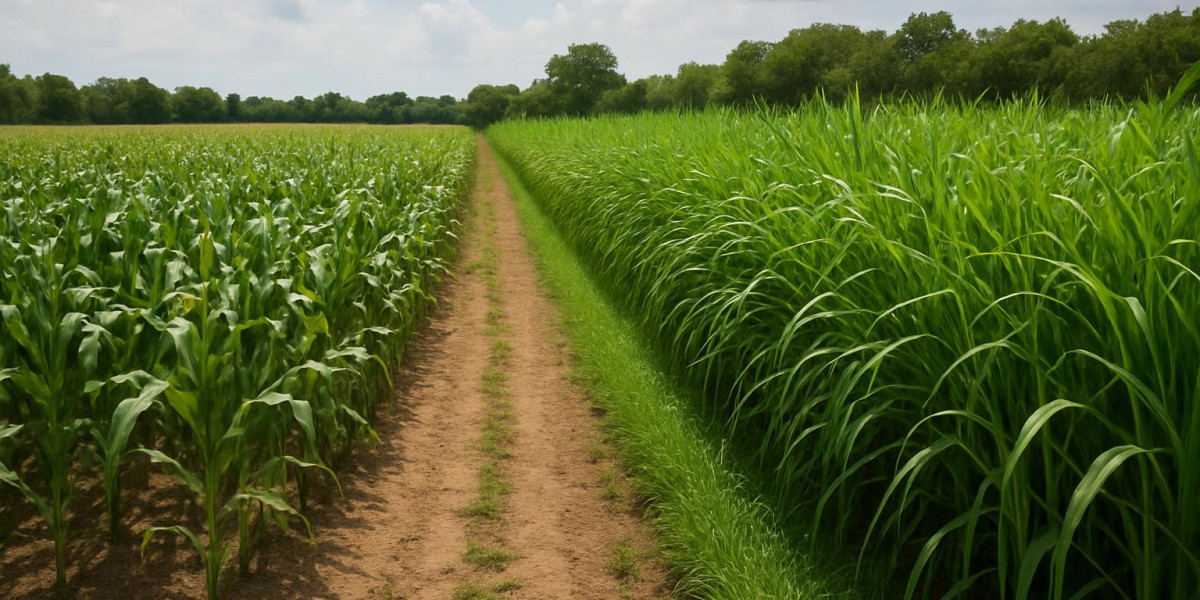Modern agriculture stands at a crossroads. On one side, industrial-scale practices have increased crop yields and global food availability. On the other, these same practices have led to soil degradation, biodiversity loss, and massive carbon emissions. As climate pressures mount and sustainable food systems become essential, certain humble crops are gaining attention for their ecological value. One such crop is the unassuming turnip.
Often overlooked in favor of more visually appealing vegetables, turnips are quietly emerging as a major force in regenerative agriculture. Turnips are more than simply another root crop because of their rapid development, tenacity, and remarkable adaptability; they are a component of a bigger solution to revolutionize farming. Here are some ways that tips are helping to create a more sustainable and well-rounded agricultural paradigm.
Rethinking Agriculture: The Sustainability Crisis
Nearly 24% of greenhouse gas emissions worldwide are attributable to agriculture, with high tillage, the use of synthetic fertilisers, and monocropping being major contributors. These methods remove organic matter, deprive the land of nutrients, and expose and weaken the soil.
The shift to greener farming models includes:
Reducing dependency on synthetic inputs.
Rebuilding soil organic matter through natural means.
Cover cropping, crop rotation, and diversified planting are crucial strategies in this movement. And turnips fit naturally into this system.
Why Turnips Matter More Than You Think
The brassica family includes turnips (Brassica rapa), which mature in as little as 30 to 60 days. They are low input, climate-adaptable, and have several uses, including as food, fodder, soil conditioner, and weed suppressant. Their fibrous roots encourage water retention, lessen erosion, and improve soil tilth.
Turnips are beneficial to farming in both biological and mechanical ways. With its strong taproots, they loosen up compacted soils and leave behind organic debris that worms and microorganisms eat. They naturally lessen the need for chemical intervention by disrupting pest and disease cycles as part of a rotating strategy.
Turnips as a Green Manure and Cover Crop
Turnips are exceptional cover crops. Planted in the off-season or between harvest cycles, they cover the ground, prevent weed growth, and absorb residual nutrients. When tilled back into the soil, they release these nutrients slowly, reducing fertilizer requirements for subsequent crops.
What makes turnips particularly appealing is their dual role: they protect the soil above ground while improving it below. Their leafy canopy shades the soil surface, and their deep roots break up hardpan layers that hinder water movement and root penetration.
Farmers who integrate turnips into their rotations often see:
Improved soil structure and aeration.
Increased microbial activity and organic matter.
And unlike some cover crops that provide little to no harvest value, turnips can be grazed or harvested, offering both ecological and economic returns.
Climate-Resilient Farming Starts With Smart Choices
Climate-smart agriculture emphasizes resilience. As weather patterns become less predictable, crops like turnips that can thrive in cool weather and marginal soils offer a strategic advantage. They germinate in cool temperatures, tolerate drought better than many greens, and can be used in spring or fall planting schedules.
Their flexibility allows farmers to plan more dynamic rotations. For instance, integrating turnips after a cereal crop or before a summer vegetable not only maximizes land use but improves overall productivity.
In addition, choosing improved varieties can boost results. Many modern turnip hybrids are bred for disease resistance, uniformity, and stronger biomass production. To explore better-performing varieties, buy hybrid turnip seeds for consistent results across seasons and soil types.
Nutrient Cycling and Natural Fertility Boost
Turnips are good nutrient recyclers. They absorb excess nitrogen from the soil, which would otherwise cause eutrophication by leaking into streams. This nitrogen is returned to the earth in an accessible form for the following planting cycle as the crop breaks down.
Their decomposing biomass has a self-fertilizing effect, functioning similarly to compost in situ. The need for synthetic inputs, which are energy-intensive to generate and frequently contaminate nearby ecosystems, is lessened by this natural cycle.
In crop mixtures, turnips also work well with legumes. Turnips aid in the release of atmospheric nitrogen from the soil bank, while legumes fix it. They provide a comprehensive nutrition loop when combined.
Breaking Pest Cycles and Weed Suppression
Turnips' capacity to inhibit weed growth and interfere with pest life cycles is one of their underappreciated advantages in a green farming paradigm. They complicate pest patterns when planted as part of a mixed rotation, which hinders the establishment of dominance by species-specific pests.
Additionally, their quick growth aids in shading out weeds that compete with them. This shading is essential for reducing the usage of herbicides in no-till or reduced-till systems.
Additionally, the roots of brassicas, such as turnips, emit organic biofumigants. These chemicals, known as glucosinolates, decompose into molecules that inhibit nematodes and soilborne diseases. According to research from SARE (Sustainable Agriculture Research & Education), one of the best biofumigant cover crops is brassica.
The Economics of Turnip Integration
Additionally, greener farming needs to be profitable. In this category, turnips do well. Their brief growing season increases land productivity by enabling several crop cycles annually. They can be included in CSA programmes, sold at neighbourhood markets, or utilised as animal feed.
Over time, turnips also lower input costs. Turnips and other cover crops provide yearly biomass, which reduces the need for insecticides and fertiliser in fields. This protects the farmer against changes in agri-input market prices and increases long-term profitability.
According to a 2023 Regenerative Ag Alliance poll, farmers that included turnips in their soil health plan saw a yearly reduction in fertiliser expenses of up to 28%. For smaller businesses, those kinds of savings may make or break profitability; they are not minor.
Turning the Soil Without Tilling It
The goal of no-till and conservation tillage is to preserve the soil's natural structure. Turnips function similarly to a living tiller. As they decompose, they leave behind air passages that enhance root penetration and water infiltration. Their roots also grow deeply, pushing through areas that are compacted.
Agriculture is becoming more and more interested in this type of bioturbation, a term that is more frequently used in biology and geology. When combined with other biological tools like compost tea or mycorrhizal inoculants, turnips' robust root systems function as soil engineers.
"In addition to producing food, a sustainable agricultural system should also replenish the soil in which it is grown." Dr. Kristine Nichols, a soil expert, said these phrases perfectly capture the change that crops like turnips contribute to.
Practical Implementation: Getting Started With Turnips
New regenerative farmers may begin small by rotating turns with cash crops or incorporating them into cover crop mixtures. Knowing when and where turnsips fit into your seasonal calendar, as well as their intended use (forage, cover, or dual-purpose), is crucial.
It's also critical to choose kinds that are suitable for the area. Recommendations from local seed banks and agricultural extension agencies are frequently based on soil type, insect pressure, and climate. It is possible to see where turns are most beneficial by using resources such as the NRCS Cover Crop Chart .
FAQs
Are turnips suitable for large-scale commercial farms or only smallholders?
Turnips can scale well. While they're often used on smaller regenerative farms, commercial growers use them for erosion control, soil building, and forage on larger acreage.Can turnips be used in organic systems?
Forks. Turnips align with organic farming principles and can be managed without synthetic chemicals, making them ideal for certified organic systems.Do turnips attract pests that harm other crops?
If overused, turnips can attract brassica-specific pests, such as flea beetles. Rotating with non-brassicas and using integrated pest management (IPM) reduces this risk.When is the best time to plant turnsips for soil health?
Spring and fall are best. In warm climates, they can also be grown in winter. Timing should consider the next crop and local frost dates.
Shifting the Narrative, Not Just the Crop
Turnips' true power is found in what they stand for—a shift in perspective—rather than merely what they perform. We begin farming with nature rather than against it. Turnips are included in a broader discussion on ecosystem services, sustainability measures, and agroecology.
They are not a panacea. However, they are part of the jigsaw, operating in the background as farmers above develop more intelligent and adaptive systems. It is not only progressive, but also essential to incorporate crops like turnips into varied systems as the world's food demand rises and environmental pressures mount.
This shift doesn't require abandoning productivity. It requires smarter design. With turnsips as allies, we build a farming model rooted in biology, not just chemistry.
















